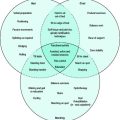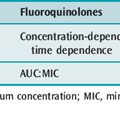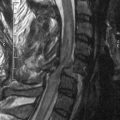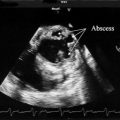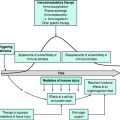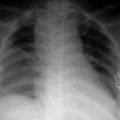Chapter 46 Brain death
Most people die a ‘conventional’ death when their heart stops beating. In others the advent of intensive organ support has complicated the diagnosis of death. Patients who have sustained irreversible structural brain damage as a result of head injury, subarachnoid haemorrhage, stroke or cerebral anoxia lie in a deep coma without the capacity to breathe. Prompt medical attention may have taken over ventilation, but recovery is impossible. It therefore became necessary to reappraise death based on the integrity of the central nervous system.1–3 Brain death describes a state of irreversible loss of brain function, including loss of brainstem function. The ability to certify death under such circumstances allows intensivists to withdraw treatment on ethical, humanitarian and utilitarian grounds. Relatives are relieved of unnecessary prolonged anxiety and false hopes, and the burden on expensive medical resources is reduced. A further benefit for society is the availability of organs for transplantation from heart-beating donors.
ROLE OF THE BRAINSTEM
There is sometimes a lack of clarity between brain death and brainstem death and this reflects differing diagnostic practices.4 In the USA the Uniform Determination of Death Act describes brain death as death of the whole brain and states: ‘an individual who has sustained irreversible cessation of all functions of the entire brain, including the brainstem, is dead’.5 This formulation is one of the most commonly applied worldwide and forms the basis of the legal status in many countries. A notable exception exists in the UK, where a brainstem-based definition of death is in place.2
The brainstem contains the cranial nerve nuclei and respiratory and cardiovascular control centres. It is also the conduit for all ascending and descending pathways that connect the cortex with the rest of the body and is an essential part of the reticulo-activating system (RAS). Awareness depends on the integrity of the RAS. The mechanism of loss of consciousness in brainstem death is related to disruption of the RAS. After onset of brainstem death, brainstem reflexes are lost sequentially in a craniocaudal direction. This process may take several hours to become complete but finally results in apnoea due to failure of the medulla oblongata. Because of the fundamental controlling role of the brainstem, myocardial and other systemic physiological functions deteriorate after the onset of brainstem death.6 Without cardiovascular support most patients confirmed as brain-dead progress to asystolic cardiac arrest within 24–48 hours.
Establishment of brain death criteria
Brain death was first described in 1959 by Mollaret and Goulon,7 two French physicians, who coined the phrase ‘coma dépassé’ (meaning literally a state beyond coma) to describe 23 unconscious apnoeic patients who had lost brainstem reflexes.
In 1968 an ad hoc committee of the Harvard Medical School defined irreversible coma, or brain death, as unresponsiveness and lack of receptivity, the absence of movement and breathing, the absence of brainstem reflexes and coma whose cause has been identified (the Harvard criteria).1 In the following year the committee indicated that brain death could be diagnosed on clinical grounds alone. This was affirmed in 1971 by two neurosurgeons (Mohandas and Chou) who described irreversible loss of brainstem function as the ‘point of no return’ (the Minnesota criteria).8 At this time it was reiterated that brain death could be diagnosed on clinical judgement alone, without the need for a confirmatory electroencephalogram (EEG), so long as certain aetiological preconditions were present.
In 1976 a memorandum from the Conference of Medical Colleges and their Faculties in the UK stated that ‘permanent functional death of the brainstem constitutes brain death’ and that this could be diagnosed clinically in the context of irremediable structural brain damage after certain specified conditions had been excluded.2 The memorandum established a set of guidelines and clinical tests for the diagnosis of brainstem death that became the foundation of practice worldwide. A subsequent memorandum in 1979 concluded that the identification of brain death means that the patient is dead, whether or not the function of some organs, such as the heart beat, is still maintained by artificial means. A further memorandum in 1983 made additional recommendations about the timing of the clinical tests and who should perform them. It also confirmed that there may be circumstances in which it is impossible or inappropriate to carry out every one of the tests and it is for the doctor at the bedside to decide when the patient is dead.
Simultaneously to the guidance being issued in the UK, other countries were formalising practice. In the USA, the 1981 Report to the President’s Commission confirmed the requirement for the irreversible cessation of brain and brainstem functions to diagnose death.5 Because death of the whole brain is diagnosed in the USA, this report recommended that confirmatory tests be used to support the clinical diagnosis and reduce the required time of observation.
CRITERIA FOR THE DIAGNOSIS OF BRAIN DEATH
Common to the determination of brain death in the UK and USA is the confirmation of the absence of clinical function of the brainstem, i.e. loss of consciousness, unresponsiveness, coma and loss of brainstem reflexes, including the capacity to breathe. The UK criteria form the basis of the clinical diagnosis of brain death in other countries and will be used as an exemplar of clinical testing. The diagnostic algorithm has three sequential but interdependent steps. Certain preconditions and exclusions must be fulfilled before clinical tests of brainstem function are performed.9
PRECONDITIONS
EXCLUSIONS
Reversible causes of coma must be excluded. These include:
CLINICAL TESTS
CRANIAL NERVE EXAMINATION
The following signs of brainstem areflexia must be present to confirm the diagnosis of brainstem death:3,9
APNOEA TEST
The apnoea test confirms the absence of spontaneous respiratory effort despite PaCO2 at a level above the threshold for stimulation of respiration (usually 6.5 kPa). Severe hypoxaemia, excessive hypercarbia and changes in arterial blood pressure can occur if the apnoea test is not carried out correctly. To minimise the risk of further damage to potentially recoverable brain tissue, the apnoea test should not be performed if any of the preceding tests confirm the presence of brainstem reflexes. The following method describes a safe method for conduct of the apnoea test. The patient should be preoxygenated with 100% for 10 minutes. Arterial blood gases (ABGs) are checked to ensure correlation with end-tidal CO2 (EtCO2) and oxygen saturation (SaO2). When SaO2 is above 95%, minute ventilation is reduced until EtCO2 rises to 6.5 kPa. ABGs are then checked to ensure that PaCO2 is also > 6.5 kPa and pH< 7.35. In patients with CO2 retention the PaCO2 may need to be higher to achieve the target pH. If blood pressure is stable, this state should be maintained for 10 minutes, after which the patient is disconnected from the ventilator. Oxygenation is maintained by endotracheal insufflation of oxygen at 5 l/min via a suction catheter. Prior recruitment manoeuvres and continuous positive airway pressure may be necessary if maintenance of oxygenation is difficult. The patient should be observed for spontaneous ventilatory effort during the following 5 minutes. If there is no respiratory effort, absence of respiratory centre activity is confirmed and documented after repeat ABG analysis demonstrates that PaCO2 remains > 6.5 kPa. After testing, normal minute ventilation should be restored to return ABGs to pretesting values.
OTHER ISSUES DURING CLINICAL TESTING
In some jurisdictions, including the UK, Australia and some states in the USA, two medical practitioners are required to confirm the diagnosis of brain death.10 The base speciality is not important but each doctor must be competent in carrying out such an assessment. It is often recommended that the apnoea test be supervised by an anaesthetist or intensivist. The doctors should be senior and not involved in organ transplantation programmes. Although the two doctors may carry out the tests together or independently, two sets of tests are recommended to demonstrate irreversibilty. The interval between the two sets of tests is not proscribed for adults in the UK but other jurisdictions set minimum time limits between the tests.10 Although death is confirmed by the second set of brainstem tests in the UK, the legal time for certification of death is that of the initial testing. In other countries, such as Australia, the time of death for certification purposes is the time after the second confirmatory examination.
Despite robust guidelines for the diagnosis of brainstem death, interpretation of this guidance varies widely.11 In a study examining compliance with guidelines in the UK, marked differences in the timing of testing, the exclusion of residual sedative agents, the management of deranged biochemistry and the conduct of the caloric and apnoea test were noted.12
SUPPLEMENTARY DIAGNOSTIC TECHNIQUES
Clinical tests are the gold standard for assessment of brainstem function and supplementary tests are not required in the UK, Australia or New Zealand. They are required by law in some European countries where the diagnosis of whole brain death is made.13 They are optional in the USA, but recommended if special circumstances limit clinical assessment or render it unreliable.
Supplementary investigations do not test brainstem function but are surrogate markers of cortical function. Many have been validated against clinical diagnosis and are not 100% specific or sensitive. They are therefore usually recommended as confirmatory rather than absolute tests.14,15 Ancillary tests are of assistance if brainstem function cannot be adequately assessed clinically (Table 46.1). They are also required in very young children.
Table 46.1 Indications for confirmatory tests to diagnose brain death
ASSESSMENT OF BLOOD FLOW IN THE LARGER CEREBRAL ARTERIES
ASSESSMENT OF BRAIN TISSUE PERFUSION
ASSESSMENT OF NEUROPHYSIOLOGICAL FUNCTION
DIAGNOSING BRAIN DEATH IN SPECIAL CIRCUMSTANCES
HIGH CERVICAL CORD INJURY
Confirmation of apnoea is fundamental to the clinical diagnosis of brain death. The possibility that apnoea may be related to high cervical cord injury may bring some difficulty to the diagnosis.16 It is important to quantify the degree of any spinal cord injury clinically, structurally and functionally by meticulous clinical examination, magnetic resonance imaging and electrophysiological tests, including SSEPs and motor evoked potentials. Confirmatory tests may also assist the clinician in being confident that the patient is brain-dead.
NEUROLOGICAL CONDITIONS
Some rare neurological conditions may mimic brain death.3 In the ‘locked-in syndrome’ the patient is tetraplegic but conscious, with preservation of conjugate vertical gaze and the ability to blink. Cranial nerve involvement and respiratory paralysis are associated with Guillain–Barré syndrome and may lead to diagnostic confusion17 but pupil dilatation in this condition is rare. Brainstem reflexes may also be absent in brainstem encephalitis but the patient is usually drowsy rather than comatose. The preconditions for diagnosis of brain death are not met in these neurological conditions. Meticulous application of the clinical criteria and careful clinical examination will ensure that these neurological conditions cannot be mistaken for brain death.
BARBITURATES
There has been resurgence in the use of barbiturates to treat intractable intracranial hypertension and some patients will progress to brain death. The usual exclusion criteria apply but previous barbiturate infusion brings particular problems to the diagnosis of brain death because of its long and unpredictable action. Plasma barbiturate levels may not reflect clinical effect, particularly in the context of brain injury, and there is no consensus regarding an acceptable minimal plasma concentration.18 Access to the assay may also be restricted and there is often a delay in obtaining the results. Another option is to wait an arbitrary period of time to allow the barbiturate effects to wear off: a period of between 2 and 5 days has been recommended. However, this ‘best-guess’ approach represents an inefficient use of ICU resource and represents additional pressures for relatives because of delays. The effects of high-dose barbiturates can mimic brain death, particularly in the presence of hypothermia. However, except in children, this is exceptionally rare and some aspect of brainstem function, such as the pupil response to light, often remains intact. In the presence of other stigmata of brain death, such as dilated unreactive pupils, characteristic cardiovascular changes and DI, the diagnosis is rarely in doubt. Confirmatory tests, particular cerebral angiography or BAEPs, may also be of assistance.
CHILDREN
Special care is recommended in diagnosing brain death in children less than 5 years of age.19 The general criteria are the same as for adults but the period of observation should be longer and confirmatory investigations, such as EEG or cerebral angiography, are often conducted. A higher PaCO2 target is also recommended during the apnoea test.20
INTERNATIONAL DIFFERENCES IN BRAIN DEATH CRITERIA
Whilst the fundamentals of the guidance for the diagnosis of brain death are common worldwide, specific criteria and requirements are often inconsistent.4 The guidelines for the diagnosis of brain death in 80 countries encompassing a broad diversity of culture and religious belief were reviewed in 2002.10 Only 88% had national guidelines and those that did showed considerable variation. Criteria for the clinical testing of brainstem areflexia were identical in all national guidelines but there were marked differences in other areas of practice (Table 46.2).
Table 46.2 International differences in the diagnosis of brain death in 80 countries
| National practice | No. of countries | |
|---|---|---|
| National guidelines in place | 70 | |
| Confirmation of brainstem areflexia by clinical testing | 70 | |
| Apnoea testing | With PaCO2 target | 41 |
| Without PaCO2 target | 20 | |
| Not required | 19 | |
| Confirmatory tests | Not required or optional | 52 |
| Mandatory | 28 | |
| Number of physicians required to make clinical diagnosis | 1 | 31 |
| 2 | 24 | |
| > 2 | 11 | |
| Unspecified | 14 | |
| Minimum observation time prior to testing (hours) | 2 | 4 |
| 3 | 2 | |
| 6 | 20 | |
| 12 | 8 | |
| 24 | 8 | |
| Unspecified | 38 |
(Modified from Wijdicks E. Brain death worldwide – accepted fact but no global consensus in diagnostic criteria. Neurology 2002; 58: 20–5.)
SUMMARY
The care of the injured brain has advanced since the clinical criteria for the diagnosis of brain death were first established. Lack of worldwide agreement on how to diagnose brain death and brainstem death remains a problem. There is an urgent need for international consensus for the diagnosis of brain death. This should retain clinical tests as fundamental but include confirmatory investigations when appropriate. Flexibility should be maintained and, as in other areas of medicine, the clinical findings should be interpreted with common sense by an experienced and humane physician.22
1 Ad Hoc Committee of the Harvard Medical School. A definition of irreversible coma. Report of the ad hoc committee of the Harvard Medical School to examine the definition of brain death. JAMA. 1968;205:337-340.
2 Working group of the conference of Medical Royal Colleges and their Faculties in the United Kingdom. Diagnosis of death. Br Med J. 1976;ii:1187-1188.
3 Wijdicks EFM. The diagnosis of brain death. N Engl J Med. 2001;344:1215-1221.
4 Baron L, Shemie SD, Teitelbaum J, et al. Brief review: history, concept and controversies in the neurological determination of death. Can J Anesth. 2006;53:602-608.
5 Guidelines for the determination of death. Report of the medical consultants on the diagnosis of death to the President’s Commission for the Study of Ethical Problems in Medicine and Biomedical and Behavioural Research. JAMA. 1981;246:2184-2186.
6 Smith M. Physiological changes during brainstem death – lessons for management of the organ donor. J Heart Lung Transplant. 2004;23(Suppl.):S217-S222.
7 Mollaret P, Goulon M. Le coma dépassé. Rev Neurol. 1959;101:3-15.
8 Mohandas A, Chou SN. Brain death – a clinical and pathological study. J Neurosurg. 1971;35:211-218.
9 Department of Health. A Code of Practice for the Diagnosis of Brainstem Death. London: Department of Health, 1998.
10 Wijdicks E. Brain death worldwide – accepted fact but no global consensus in diagnostic criteria. Neurology. 2002;58:20-25.
11 Powner DJ, Hernandez M, Rives TE. Variability among hospital policies for determining brain death in adults. Crit Care Med. 2004;32:1284-1288.
12 Bell MD, Moss E, Murphy PG. Brainstem death testing in the UK – time for reappraisal? Br J Anaesth. 2004;92:533-540.
13 Haupt WF, Rudolf J. European brain death codes: a comparison of national guidelines. J Neurol. 2000;246:432-437.
14 Young GB, Shemie SD, Doig CJ, et al. Brief review: the role of ancillary tests in the neurological determination of death. Can J Anaesth. 2006;53:620-627.
15 Young GB, Lee D. A critique of ancillary tests for brain death. Neurocrit Care. 2004;4:499-508.
16 Waters CE, French G, Burt M. Difficulty in brainstem death testing in the presence of high spinal cord injury. Br J Anaesth. 2004;92:760-764.
17 Vargas F, Hilbert G, Gruson D, et al. Fulminant Guillain–Barré syndrome mimicking cerebral death: case report. Intens Care Med. 2000;6:623-627.
18 Pratt OW, Bowles B, Protheroe RT. Brainstem death testing after thiopental use: a survey of UK neurocritical care practice. Anaesthesia. 2006;61:1075-1078.
19 Banasiak KJ, Lister G. Brain death in children. Curr Opin Pediatr. 2003;15:288-293.
20 Shemie SD, Pollack MM, Morioka M, et al. Diagnosis of brain death in children. Lancet Neurol. 2007;6:87-92.
21 Working Party of the British Paediatric Association. Diagnosis of brain stem death in infants and children. London: British Paediatric Association, 1991.
22 Shaner DM, Orr RD, Drought T, et al. Really, most sincerely dead: policy and procedure in the diagnosis of death by neurologic criteria. Neurology. 2004;62:1683-1686.

